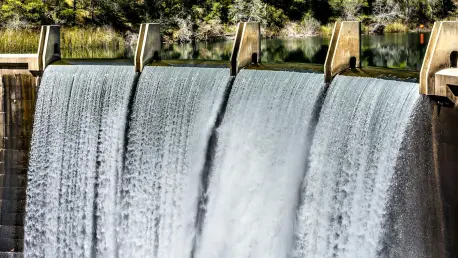In Hancock County, West Virginia, a groundbreaking initiative is capturing attention as local leaders pave the way for a sustainable energy shift, with county commissioners recently approving essential agreements for a proposed hydroelectric power facility at the New Cumberland Locks and Dam. This marks a pivotal moment for the region. Spearheaded by a dedicated energy company, this project promises to harness renewable power without disrupting the natural flow of the river or requiring water storage. This development, brought to the county’s forefront just last year, showcases a forward-thinking commitment to meeting energy demands while prioritizing environmental stewardship. The implications of this endeavor extend beyond mere electricity generation, offering a glimpse into how rural communities can embrace innovation to address modern challenges. As the project moves forward, it raises compelling questions about the role of renewable resources in reshaping local economies and energy landscapes.
Harnessing Renewable Power with Community Benefits
The scope of the hydroelectric facility at New Cumberland Locks and Dam is impressive, with projections estimating a capacity of around 20 Megawatts and an annual output of roughly 150 Gigawatt-hours—enough to power over 14,500 homes. Beyond the numbers, the project brings tangible advantages to Hancock County through carefully structured agreements. A tax revenue-sharing plan splits benefits between the county and the local school board, while a lease of 32 acres of county-owned land ensures a steady income stream starting at $3,500 monthly. Additionally, a Community Development Fund will inject $150,000 annually into the area, with the majority allocated to county initiatives and a portion supporting education. This financial framework reflects a deliberate effort to balance energy innovation with community welfare. Moreover, the construction phase, slated to begin in early 2026, is expected to generate approximately 200 jobs, providing a significant economic boost to the region during its development.
A Broader Vision for Sustainable Energy
Looking at the larger picture, this hydroelectric project aligns with a growing trend of renewable energy adoption across West Virginia, signaling a regional shift toward sustainable solutions. Similar developments are underway at other locations, such as the Pike Island Locks and Dam near Wheeling and the Robert C. Byrd Locks and Dam near Apple Grove, highlighting a collective push to meet rising power needs with minimal environmental impact. The Hancock County initiative stands out for its long-term design, with the facility engineered to operate for over 50 years, ensuring enduring benefits. Environmental and recreational considerations are also woven into the plan, as evidenced by the inclusion of a dedicated fishing area near the site. While the foundational approvals mark a critical milestone, ongoing coordination with local stakeholders, including city officials, suggests that the path ahead will involve continued collaboration. This project not only addresses immediate energy goals but also sets a precedent for how rural areas can adapt to the demands of a cleaner, more sustainable future.









